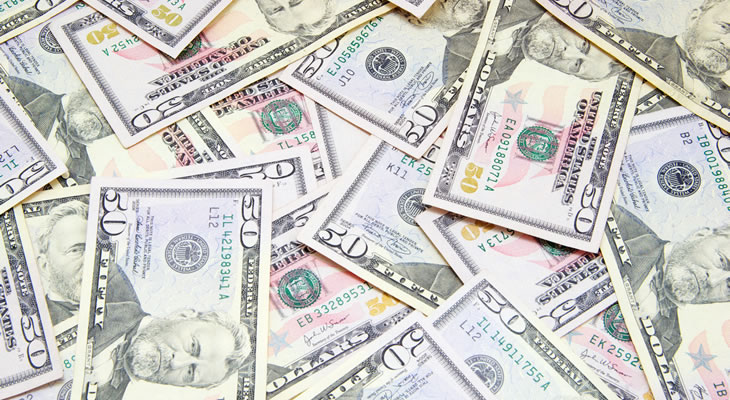Pound US Dollar (GBP/USD) Exchange Rate Slips as Brexit Pessimism Weighs on Traders
The Pound Sterling US Dollar (GBP/USD) exchange rate slipped this morning, and the pairing is currently trading at an inter-bank rate of $1.3137.
The Pound is slipping as traders worry about Brexit and a slowdown of the global economy, which caused investors to jump back into the safe-haven US Dollar.
The Organization for Economic Co-operation and Development (OECD) slashed global growth forecasts today as a result of the slowdown in Europe and risks from China, it warned:
‘The global economy is slowing and major risks persist, with growth weakening much more than expected in Europe.’
Further warnings from the OECD highlighted the risk of a no-deal Brexit has dampened sentiment in Sterling, as they stated:
‘In such a scenario, the likely near-term recession in the United Kingdom would generate sizeable negative spillovers on growth in other countries.
‘Although contingency measures to soften the impact of a no-deal outcome are being taken by both sides, UK-EU separation without an agreement would still be a major adverse shock for Europe and possibly elsewhere in the world, given that the United Kingdom is an important trading partner for many countries.’
US Dollar (USD) Rises as US Services Sector Continued to Expand
The Pound US Dollar (GBP/USD) exchange rate rose over the course of Tuesday afternoon before slipping once again on Wednesday morning.
A lower-than-forecast US services PMI likely dampened sentiment in the Dollar, although data showed that business activity in the sector continued to improve in February.
The rate of expansion in February was the fastest since July 2018.
However, while service sector firms remained optimistic in February, their degree of confidence was weaker than it was in January and historically subdued.
The composite PMI was also released, which registered at
Commenting on this data, Chris Williamson, Chief Business Economist at IHS Markit said:
‘The US PMI surveys tell a tale of two economies in February, with a slowdown story confined to the goods-producing sector. While manufacturing struggled, with the surveys consistent with a near-stalling of factory output and order books, the service sector remained encouragingly resilient, enjoying its strongest burst of activity for seven months.
‘[…] The worry is that the manufacturing slowdown will spill over to the service sector, dampening economic growth in coming months. Companies themselves certainly appear to have become more circumspect, with business optimism cooling in February amid worries over the impact of tariffs, trade wars, higher prices and rising interest rates.’
The US ISM non-manufacturing PMI rose to a higher-than-forecast 59.7 in February, however this could do little to stop Sterling rising on comments from Mark Carney.
Sterling (GBP) Slides despite ‘Constructive Developments’ made in Brexit Preparations
The Pound rallied over the course of yesterday afternoon following comments from Bank of England (BoE) Governor, Mark Carney.
Carney gave a speech to the House of Lords committee, in which he reassured the UK is better prepared to deal with Brexit.
Discussing how prepared businesses are, the BoE Governor said:
‘There has been progress in preparedness and that reduces the level of the economic shock. To be absolutely clear, we still expect that there would be a material economic shock. Half of businesses are straight up reporting to us that they’re not prepared for a no-deal Brexit.’
He also reassured that if the UK leaves the European Union (EU) without a deal, it is more likely to be a disorderly event, rather than a disruptive one.
Pound US Dollar Outlook: Will the GBP/USD Exchange Rate Rise on a Hawkish BoE?
Looking ahead to this afternoon, the Pound (GBP) could rise against the US Dollar (USD) following a speech from the BoE’s Michael Saunders.
If Saunders takes on a hawkish tone when speaking about monetary policy or the post-Brexit economy it could buoy Sterling.
The US Dollar could slip on Thursday afternoon following the release of the non-farm productivity for Q4 2018.
Productivity is forecast to rise by 1.7% compared to the previous quarter where there was a rise by 2.3%.
If productivity does not rise by as much as forecast, it could cause the Pound US Dollar (GBP/USD) exchange rate to slip.


Comments are closed.